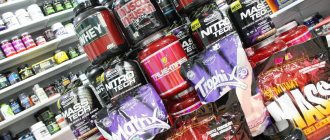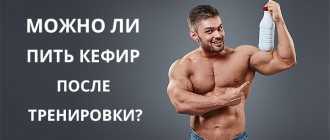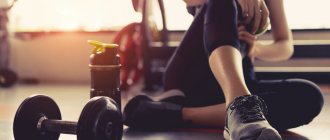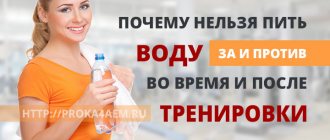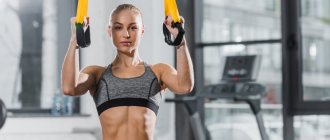“I rushed at ten thousand, as if at five hundred, and got fried” - the state of overtraining was once quite accurately conveyed by Vladimir Vysotsky. Too high intensity and duration of training, neglect of warm-up and/or cool-down, arrogance and a reckless desire to achieve your goal at any cost lead to muscle discomfort, sore throat, general fatigue, and sometimes complete fitness apathy. Moreover, failure happens not only to a neophyte, but also to an experienced athlete.
As a rule, muscles react painfully to physical activity that is unusual for them, completely new or long forgotten. The reason for this is microtrauma of muscle and connective tissue and the accompanying inflammatory processes. This type of pain usually begins to develop 12-24 hours after exercise and peaks 24-72 hours later and is called delayed onset muscle soreness.
To bring the muscles out of pain shock, you need to give them a rest. And it doesn’t have to be lying on the couch. Experts today are increasingly advocating dynamic rehabilitation, in other words, active rest - light cardio exercises that accelerate blood circulation and thereby stimulate recovery. Let's figure out how to restore muscle performance and not lose interest in fitness after a high-impact workout.
Table
There is no precise scientific data to estimate the time required for a full return to sports activities. There are many factors that can affect the result: age, level of load, diseases of the musculoskeletal system, genetics.
But there are personal observations of athletes. Let's try to bring the data together:
| № | Kind of sport | Recovery time, h |
| 1 | Stretching | 24 |
| 2 | Body-building | 48 |
| 3 | Powerlifting | 72 |
| 4 | Martial arts | With general physical fitness – general physical fitness – 48, without – 24 |
| 5 | Strength training | 48 |
| 6 | Cardio training | 24 |
| 7 | Run | 48 |
What is anosmia?
Anosmia is a very common condition, but it has gained particular notoriety in the midst of the pandemic. Anosmia due to coronavirus is a common phenomenon in which people lose their full sense of smell. Still, the causes of anosmia are varied, and this phenomenon is not limited to coronavirus alone. The duration of anosmia during coronavirus also varies; we will discuss what it depends on below. The olfactory epithelium is a small layer on the roof of the nasal cavity that is responsible for the sense of smell.
These olfactory receptor cells that make up the olfactory epithelium are neurons (nerve cells), which transmit impulses to the brain, where it is perceived as smell. Coronavirus-induced anosmia or hyposmia may be a direct effect of the virus on stentacular cell function by reducing odorant clearance function, or it may be indirect by causing secondary metabolic or other dysfunction of olfactory receptor neurons, since stentacular cells also serve to protect these neurons. Sustentacular cells regenerate after damage faster than olfactory receptor neurons, which may explain why COVID-19 anosmia is usually short-lived.
Entire countries are quarantined; epidemiologists and virologists continue to call for self-isolation of those at risk: people over 65 years of age and patients with chronic diseases and weakened immune systems. Read more in the article: “chronic diseases: list for coronavirus.”
Average time
A simple rule is that the larger the muscle, the more time it will need to rest after training in hours. There are those who are able to return to work within a minimum period of time: abdominal muscles, biceps femoris. The latissimus dorsi muscles take the longest to return to normal. They should not be loaded more than twice a week.
The average time for tissue regeneration is 48 hours.
It is necessary to take into account the fact that the nervous system, ligaments, joints and tendons need restoration.
Goals achieved during the recovery process
If rehabilitation is carried out correctly, upon completion, the patient almost immediately returns to the “pre-Covid” lifestyle. The main goals that doctors are trying to achieve during the recovery process are as follows:
- normalize lung activity;
- prevent fibrosis from developing;
- remove all residual effects of viral infection;
- increase immune defense;
- prevent adhesions from forming;
- normalize digestive processes;
- improve vision (if it has deteriorated);
- increase performance and physical endurance;
- prevent depression from developing.
An individual approach to each patient allows us to achieve all these goals in one or several months. The main thing is that the patient trusts the doctor and follows all his instructions.
How to catch supercompensation
There are 4 recovery phases:
- Fast.
- Slow motion.
- Super compensation.
- Deferred.
We are most interested in the third point. This is the best time to start a new workout. The body is preparing for increased load, so it actively builds muscle tissue. But how can we determine that this moment has arrived?
Currently there are no exact methods. Perhaps science will eventually be able to determine the hour “X” with an accuracy of the minute. In the meantime, let's try to reason logically. All we have is an approximate average recovery time. It is equal to 48 hours. This means that you need to select intervals through trial and error. But it’s better to take the same two days after training as a basis. You can think something like this:
- Muscles don't grow, but the athlete feels rested ? This means you can reduce recovery time. Moreover, Olympians train 3 times a day and manage to take prizes.
- Muscles are at the same level, but fatigue knocks you down ? It makes sense to increase the pause between classes. For example, up to 72 hours. If progress begins, then everything is going in the right direction.
Muscle tissue increases in volume, but the athlete is constantly under stress? Sooner or later, overtraining will occur. And then a rollback is just around the corner.
Vitamins during the recovery period after Covid-19
You can use vitamin supplements and immunomodulators to quickly improve your health during the recovery period. The only thing is that such drugs should be selected by a doctor, since any medication has contraindications and side effects.
Experts prescribe vitamin complexes, taking into account laboratory diagnostic data. Most often, during the recovery period, taking vitamins B, D, and ascorbic acid is indicated.
Microelements are also important for rehabilitation. Zinc comes to the fore. It has anti-inflammatory activity and supports the full functioning of almost all internal organs. Effective for speedy recovery and selenium. It is prescribed for immunodeficiency and respiratory failure.
Anatomy
One definition of recovery is the ability to maintain and exceed results in a particular activity. That is, the body must be able to keep pace, overcome stress and adapt to new loads after completing competitions or exercises.
In the first couple of years, theorists of sports medicine proceeded from the concept of homeostasis - the desire to maintain a balance between physiological processes. The body, under normal conditions, wants to remain in balance. But what happens after exercise? Stress hormones are released that disrupt “peace and order.”
Every workout is extreme. But it can be controlled. When an athlete comes to the gym and carries iron for an hour, he exposes himself to stress. The body tries to turn on defense mechanisms and return to normal. Alternatively, protein synthesis begins. This is an attempt to make the muscles bigger and stronger in preparation for future stress.
How long does it take to recover from coronavirus?
If the patient suffered from Covid-19 in a mild or moderate form, he will be “back in action” within a month. If the pathology is severe and accompanied by dangerous complications, rehabilitation will take several months or even six months. It should be borne in mind that sometimes the disease leads to disability. Then complete recovery becomes impossible altogether.
One thing is clear - people who competently fight COVID-19 have an excellent chance of full recovery. In no case should you postpone a visit to the doctor if you suspect the development of this infection.
Why do muscles work?
Our muscles do not turn on by themselves, they need an electrical impulse. This means that we cannot do without the autonomic nervous system. It consists of two branches:
- Sympathetic (SNS) . What they call “freeze, fight or flight.” Activation of this branch helps you jump high, run fast, and lift weights.
- Parasympathetic (PNS) . The system is responsible for the digestion of food, the synthesis of new tissues, the process of recovery and rest.
The goal of development is to learn to control the nervous system. If you need to train for a long time and build muscle mass, then you need to “turn on” the SNS. But when the time comes to relax and sleep soundly, healthyly, you can’t go without the PNS.
But how to monitor the balance of the nervous system?
What does coronavirus lead to?
Specialists from rehabilitation centers emphasize that almost no patient who has recovered from Covid-19 leaves the hospital completely healthy. A thorough examination of patients often reveals one or another disorder that needs to be eliminated.
The disease does not go away without consequences. That is why it was called the “plague of the 21st century.” After recovery, general malaise, cough, and fever may persist for a very long time.
In most cases, post-Covid syndrome is characterized by:
- Sleep disturbances, inability to fall asleep in the evening, drowsiness in the morning and during the day. The patient constantly wants to sleep, which is why he feels weak and cannot work normally.
- Decreased memory, deterioration in attention and thinking characteristics. Covid-19 “hits” all mental functions. Patients cannot remember new information and constantly forget what they wanted to say.
- Asthenic syndrome. When performing the simplest physical or intellectual work, a person feels tired and exhausted. It's very annoying.
- Blood pressure surges. It has been noticed that hypotensive people can become hypertensive after coronavirus. People who have always suffered from high blood pressure cannot lower it with the help of conventional medications.
- Bradycardia, arrhythmia, tachycardia. Each person experiences the post-Covid period differently. The fact that the virus affects the heart muscle is an irrefutable fact. Doctors advise immediately after recovery to do an electrocardiogram and undergo an ultrasound.
- Dyspnea. Viral agents damage lung tissue. This is why pneumonia develops so often with COVID-19. The problem is that even after recovery, the lungs do not work at full capacity. This is manifested by a feeling of lack of air, severe shortness of breath when climbing stairs, bending over, and the inability to sleep lying on your back.
- Disruptions in the activity of the gastrointestinal tract. Coronavirus often manifests itself with diarrhea and vomiting. Symptoms may persist even after receiving a negative Covid test. If the illness was accompanied by pneumonia and antibiotics were used, the problem is aggravated by dysbacteriosis.
- Deterioration of vision. Fortunately, this consequence is rare in medical practice, but it still occurs. If the patient notices that his vision has become worse, he urgently needs to visit an ophthalmologist. It is necessary to check the condition of the optic nerve.
- Depression. A depressed psychological state occurs in any person who has suffered a serious illness from coronavirus. People are afraid that they will get sick again. They feel completely weak and helpless. If the signs of post-Covid syndrome are pronounced, they worry about the state of their health and fear that doctors have not treated them properly.
Among the most dangerous consequences of COVID-19 are stroke, myocardial infarction, thrombosis, and gangrene. It is important to begin recovery immediately after recovery. There is no need to waste time and money on rehabilitation procedures, since they are the most effective way to improve health.
Heart rate variability monitoring
Heart rate variability (HRV) is a change in the interval between two adjacent myocardial contractions. The measurement technique in Russia is promoted by Roman Markovich Baevsky, Doctor of Medicine.
The technology emerged in the 1960s. Scientists analyzed the pulse and cardiogram of the astronauts. As a result, the conclusion emerged that the main indicator of the body is the ability to adapt.
A domestic company is working in the direction of the HRV method, which has developed a special Engy Health application and a professional cardiac sensor Engy Beat. When playing sports, the application shows the current state of the body:
- Energy . It tells how ready the body is for stress.
- Stress . The scale displays your stress level.
- Recovery . Reflects the state of the parasympathetic nervous system.
The smart gadget analyzes the heart rhythm and produces a ready-made, visual result. Like at a traffic light. Green – the body is normal. Red – danger of overtraining.
To connect to the application you need a professional heart rate monitor. Top-end Apple Watch models and devices such as Garmin HRM Dual, Polar H7 and Cardiosport TP3 are suitable.
Main symptoms of coronavirus
Unlike year-round forms of coronavirus infection, highly pathogenic forms of the disease are much more severe; their prognosis is very serious in 20%. The most common signs of COVID-19 are:
- increase in body temperature up to 38 degrees C;
- increased fatigue;
- sweating;
- dry cough;
- loss of taste and smell;
- nausea;
- diarrhea.
Some patients may experience muscle and joint pain, runny nose, nasal congestion, decreased or disappearance of sense of smell, sore throat, and moderate diarrhea. Usually these symptoms develop gradually and are not pronounced. Most people infected do not experience any serious symptoms or feel unwell, as with other forms of coronavirus infection. In 80% of cases, the disease ends in complete recovery. In approximately one in six cases of COVID-19 (mainly in older people and people weakened by concomitant diseases), severe symptoms occur with the development of respiratory failure:
- increased fever and cough;
- shortness of breath, an atypical type of breathing appears;
- weakness increases;
- possible chest pain when breathing and coughing, abdominal pain and tachycardia;
- lips and nose acquire a bluish tint;
- disturbance and confusion may occur.
All of these signs may indicate developing pneumonia or pulmonary respiratory distress syndrome. In these cases, urgent hospitalization in the intensive care unit is required. The time from the onset of COVID-19 symptoms (if the pathogen is confirmed) to death in severe cases ranges from 6 to 41 days (average 14 days).
The course of coronavirus infection, including the speed of recovery of the sense of smell, depends on the individual characteristics of a person’s immunity, his genetic characteristics and the presence of concomitant diseases. Read more in the article: “loss of taste and smell due to coronavirus.”
Influence of factors
Typically, specialists who develop training schedules take into account 3 factors:
- Age.
- Target.
- Lifestyle.
A young athlete in his 20s experiences little stress. Usually he has plenty of time, no obligations to people and credit institutions. Therefore, an athlete can easily endure high stress and quickly recover from it. But if a person is in his 40s and working tirelessly to support his family, his stress level is high and his ability to recover is low.
Content:
- How long does it take to recover from coronavirus?
- What does coronavirus lead to?
- Goals achieved during the recovery process
- Doctors involved in the recovery of post-Covid patients
- Physiotherapy options
- Vitamins during the recovery period after Covid-19
- Features of rehabilitation of post-Covid patients
- What not to do during the recovery period
Coronavirus infection has not been studied well enough to date. Studies have shown that after it, many people experience negative consequences for the functioning of the lungs, kidneys, and liver. Even mental activity changes if a person is seriously ill.
It is important not to ignore the symptoms of coronavirus after recovery and to deal with them by enlisting medical help. Otherwise, the work of the immune system will resemble a “swing” - a temporary rise will inevitably be followed by a rapid decline.
People who suffered from covid pneumonia, thrombosis, or were on artificial ventilation take a particularly long time to recover. It is better for them to undergo rehabilitation not at home, but in a specialized rehabilitation center, where all conditions have been created for the rapid restoration of normal immune function.
Dependence on loads
To understand how much effort an exercise takes, you need to monitor the statistics of approaches and repetitions. In this case, the formula for evaluation will be as follows:
Sets x reps x load.
Then two workouts according to the 5x5 scheme will look like this:
- 5 sets × 5 reps × 90 kg = 2250 kg total load.
- 5 sets × 5 reps × 180 kg = 4500 kg load.
It seems that each workout involves 25 repetitions, but the level of fatigue is completely different.
Run
Using the example of running, you can understand how much time it takes for muscles to recover after training. This sport affects the same muscles. The only difference is additional conditions such as duration and relief.
Running on hilly terrain with ups and downs is especially taxing on the body. This is due to the fact that the muscles need to constantly expend effort on braking and shock absorption. Therefore, the effect of soreness is especially intense.
According to a study published in the British Journal of Sports Medicine, an athlete will need 48 hours to rest before returning to running.
Features of rehabilitation of post-Covid patients
A universal recovery program for people who have recovered from coronavirus has not yet been drawn up. Doctors came to the conclusion that patient therapy should be comprehensive and include:
- Balanced diet. The patient needs to eat more foods rich in vitamins and minerals. The diet should be enriched with fruits and vegetables.
- Taking medications selected individually. There should be no self-medication during recovery.
- Exercise therapy. Loads should be increased gradually. At first, the patient should perform the simplest gymnastics. As his energy level increases, you can introduce more challenging and intense exercises.
- Breathing exercises. Mandatory for improving lung function. All those recovering should do it - both those who developed pneumonia and those who were able to avoid it.
- Maintaining sleep and wakefulness. A person should sleep at least 8-10 hours a day. This will reduce the severity of asthenic syndrome.
Training schedule
In most cases, professional trainers recommend guided by your own feelings. Is it hard to work out 4 times a week? This means that you only need to devote 3 days to sports. Otherwise, there will be a risk of falling into a period of constant stress. This is destruction, not growth.
A training week might look like this:
- Monday . Maximum effort. Lower body.
- Tuesday . Rest.
- Wednesday _ Maximum effort. Upper body.
- Thursday . Rest.
- Friday . Moderate effort. Lower body.
- Saturday . Moderate effort. Upper body.
- Sunday . Day off.
At maximum loads, the athlete will be able to train only 2 times a week. Therefore, 48-72 hours of time are needed for muscle recovery. But you still need to wait until the nervous system returns to normal.
Of course, if you work only 2 days and rest the rest of the time, there will be no progress. Therefore, it is impossible without moderate training. They will allow you to stay in good shape.
If the goal is intensive growth of muscle mass, bodybuilding trains using a split system. Then the maximum load should be done on the day when the legs, chest or back “sway”:
- Monday . Legs.
- Tuesday . Rest.
- Wednesday _ Breast.
- Thursday . Rest.
- Friday . Back.
- Saturday . Arms and shoulders.
- Sunday . Day off.
This distribution allows you to work with a minimum level of stress. Groups of muscles recover faster than all muscles at once.
The importance of rehabilitation after surgical treatment
The main condition for recovery is a well-performed surgical intervention. However, without proper rehabilitation, the final result of the operation may be significantly lower than originally planned. Final recovery requires rehabilitation assistance - restoring the patient’s lost functions may require a very long time and effort.
Rehabilitation after surgery (after a ruptured biceps muscle, calf muscle, etc.) is hard work that requires proper training of doctors and special skills of medical personnel. It is carried out depending on the consequences of the injury or disease, as well as the treatment provided.
